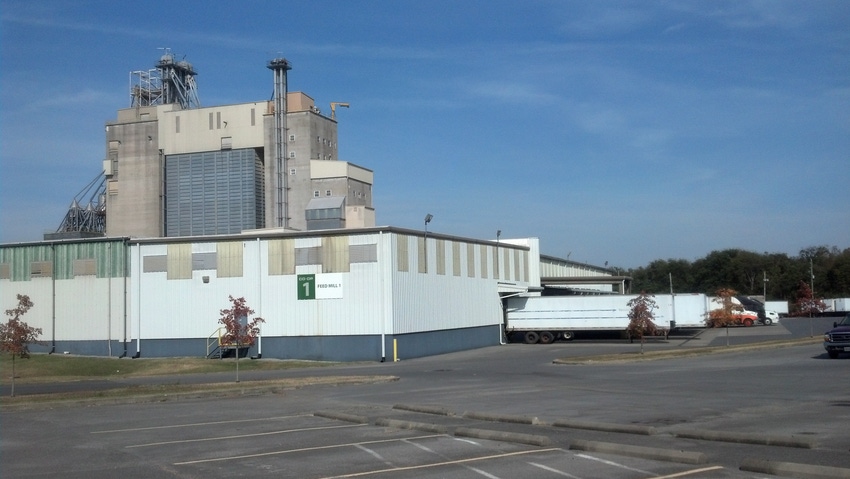Rapid evolutionary phase for feed mills anticipated in response to livestock sector expansion.

A prolonged period of low feed prices, combined with steadily growing demand for animal protein, continues to fuel profitability and optimism for U.S. feed mill operators, according to a new report from CoBank. However, changes in the industry are spurring the need for newer, larger facilities and forcing the closure of older mills that lack the newest technology.
According to the report, the number of feed mills in the U.S. fell 11% in the last two years, yet feed demand grew 2.5% in the same period. The abundant and affordable supply of grains and oilseeds has led to a 19% increase in total domestic feed usage since 2012, when use had plummeted to its lowest level since 1995. With many mills operating at capacity, they are now gearing up for the next surge in demand expected from the swelling U.S. hog population.
“Many feed mills are investing in upgrades to aging facilities or replacing them with new facilities that boost capacity and efficiency to meet the growing demand for livestock feed,” said Tanner Ehmke, CoBank senior economist, grains, oilseeds and ethanol and farm supply. “There are several reasons for the huge investments being made, but expansion in the hog sector is the leading factor.”
The report said new hog processing plants are incentivizing the growth, and the implications for the industry are far-reaching. Poultry flocks are also growing, though at a slower pace, the report added.
“Together, poultry and hog producers make up more than half of feed mills’ demand. The dairy herd is also growing but accounts for less than 15% of feed mills’ demand, and similar to poultry, dairy producer dependence on feed mills is not increasing significantly,” CoBank reported.
As the level of feed demand from the animal production sector has expanded and evolved, so has the nature of that demand, the report explains, adding that it has become considerably more diverse and specialized. Livestock and poultry operators are increasingly calling for custom feed formulations with micro-ingredients. New feed mills are more frequently focusing on serving single-specie markets, with fewer general-purpose toll mills.
This evolution, the report said, has put pressure on smaller feed mills that are restricted by capacity or are unable to meet customers' tailored nutritional needs.
“Large, bulk orders are increasingly replacing smaller orders and bagged feed,” Ehmke said. “There’s also a greater tendency for new mills to offer animal nutrition expertise and consulting services, along with formulations requiring veterinarian feed directives.”
Rising labor costs and a tightening labor market are also driving feed mills to pursue new efficiencies through technology and automation. Consequently, the total number of feed mills continues to decline as older mills are consolidated.
“Labor is by far the largest operating cost for feed mills, typically comprising about half of the total operating cost,” the report noted. In fact, CoBank cited a recent Food Navigator survey showing that 68% of respondents saw labor and the ability to staff quality employees as their major challenge.
The increased implementation of technology and automation has led to the overall decline in feed mills as newer facilities have replaced older feed mills, the report explained.
Additionally, CoBank said the new regulatory environment highlighted by the Food Safety Modernization Act (FSMA) is expected to hasten consolidation within the industry to bigger, technology-driven mills that meet the more stringent requirements. The costs associated with FSMA compliance may lead some mill operators to exit the business, while others will merge, consolidate or invest in new procedures to ensure compliance, the bank added.
“Despite these challenges, the outlook for the feed business remains strong over the next few years, particularly for those mills positioned to invest in facility enhancements,” Ehmke said. “Meat packers are making plans to increase slaughter capacity, while profitability at the producer and integrator level is triggering production expansion. That adds up to a positive outlook for improved feed demand, particularly over the next two years, before animal production is expected to stabilize.”
About the Author(s)
You May Also Like

.png?width=300&auto=webp&quality=80&disable=upscale)

